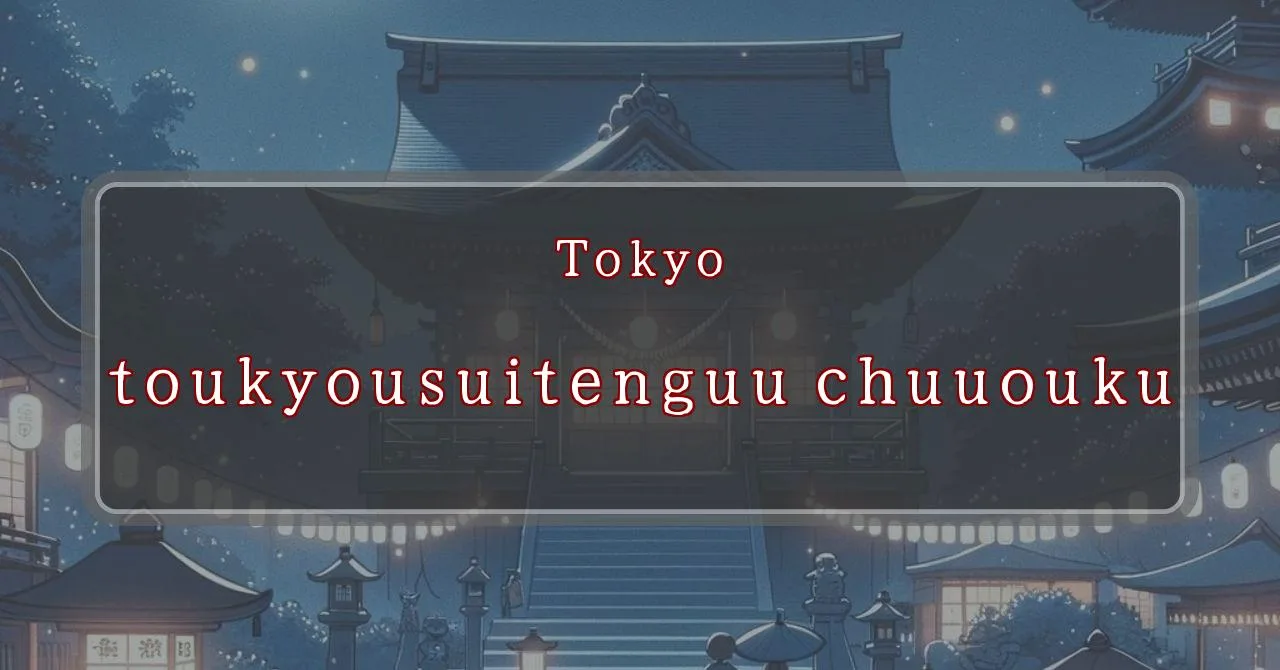Tokyo’s vibrant festival of prayers and good fortune
Basic Information
Suitengu Shrine is a Shinto shrine located in Nihonbashi蛎殻町, Chuo, Tokyo, Japan.
- Address: 2-4-1 Nihonbashikakigaracho, Chuo-ku, Tokyo 103-0014, Japan
- Phone Number: 03-3666-7195
- Access: 1-minute walk from Suitengu-mae Station on the Tokyo Metro Hanzomon Line, 6-minute walk from人形町 Station on the Tokyo Metro Hibiya Line, 8-minute walk from人形町 Station on the Toei Asakusa Line, 12-minute walk from Hamacho Station on the Toei Shinjuku Line
- Festival Days: May 5th, 2024
Main Events and Attractions of the Festival
The Suitengu Shrine Festival is a lively and colorful event that attracts many visitors each year. The main events and attractions of the festival include:
Mikoshi Procession
The mikoshi procession is the highlight of the festival. A mikoshi is a portable shrine that is carried through the streets by a team of people. The Suitengu Shrine mikoshi is particularly large and impressive, and it is carried by a team of over 100 people. The procession is accompanied by music and dancing, and it creates a festive atmosphere.
Kagura Performance
Kagura is a traditional Japanese dance that is performed at Shinto shrines. During the Suitengu Shrine Festival, kagura is performed by a group of young women who are dressed in colorful costumes. The dance is graceful and elegant, and it tells the story of the shrine’s deity, Suitengu.
Bon Odori Dance
Bon odori is a traditional Japanese dance that is performed during the Obon festival. During the Suitengu Shrine Festival, bon odori is performed by a group of people who are dressed in yukata, a traditional Japanese summer kimono. The dance is lively and energetic, and it is a great way to experience Japanese culture.
Food Stalls
There are many food stalls at the Suitengu Shrine Festival, selling a variety of delicious Japanese food. Some of the most popular foods include yakitori (grilled chicken skewers), takoyaki (octopus balls), and taiyaki (fish-shaped cakes filled with sweet red bean paste).
Games and Activities
There are also a number of games and activities for children at the Suitengu Shrine Festival. These include goldfish scooping, ring toss, and face painting. There is also a petting zoo, where children can interact with animals such as rabbits and goats.
Blessings and Deities
Suitengu Shrine is dedicated to the deity Suitengu, who is the god of water and navigation. Suitengu is also known as the god of good luck and fortune, and is worshipped by people from all walks of life. The shrine is a popular destination for people who are praying for success in business, safe travels, and good health.
- Deity: Suitengu (god of water, navigation, good luck, and fortune)
- Benefits of worship: Success in business, safe travels, good health
Origin and History
Suitengu Shrine was founded in 1818 by Lord Yorihisa Arima, the feudal lord of Kurume Domain in Kyushu. Lord Arima had a deep faith in Suitengu, and he built the shrine in order to pray for the safety and prosperity of his domain. The shrine was originally located in Akasaka, but it was moved to its current location in Nihonbashi in 1875.
- Founder: Lord Yorihisa Arima
- Year of foundation: 1818
- Original location: Akasaka
- Current location: Nihonbashi
Tips and Notes for Visitors
Here are some tips and notes for visitors to Suitengu Shrine:
- The shrine is open from 7:00 AM to 6:00 PM.
- Admission is free.
- There is a large parking lot available for visitors.
- The shrine is a popular destination for weddings and other ceremonies.
- There are a number of restaurants and shops located near the shrine.
Parking Information
There is a large parking lot available for visitors to Suitengu Shrine. The parking lot is located next to the shrine, and it can accommodate up to 40 cars. The parking fee is 500 yen per day.
- Location: Next to the shrine
- Capacity: 40 cars
- Fee: 500 yen per day
Popular Stalls and Food Carts in Recent Years
| Type of Stall | Description |
|---|---|
| Takoyaki | A staple at Japanese festivals. Characterized by a crispy outside and a creamy inside. |
| Jaga Butter | A simple yet popular snack of hot potatoes lavishly topped with melted butter. |
| Baby Castella | Small castella cakes, sweet and fluffy treats enjoyed by children and adults alike. |
| Grilled Ayu with Salt | Fresh ayu fish grilled whole with salt, a savory taste of Japanese summer. |
| Shaapin | A unique gourmet item influenced by foreign cuisine, with a chewy skin wrapping the filling. |
| Okonomiyaki | A Japanese grilled dish where you often choose your own ingredients for a personalized flavor. |
| Cotton Candy | A fluffy, sweet snack that’s extremely popular with children. |
| Chocolate Banana | A banana coated in chocolate, a fun and visually appealing dessert. |
| Kushiyaki | Various types of ingredients skewered and grilled, an easy-to-enjoy snack. |
| Yakisoba | Fried noodles mixed with a special sauce, a fast food favorite in Japan. |



